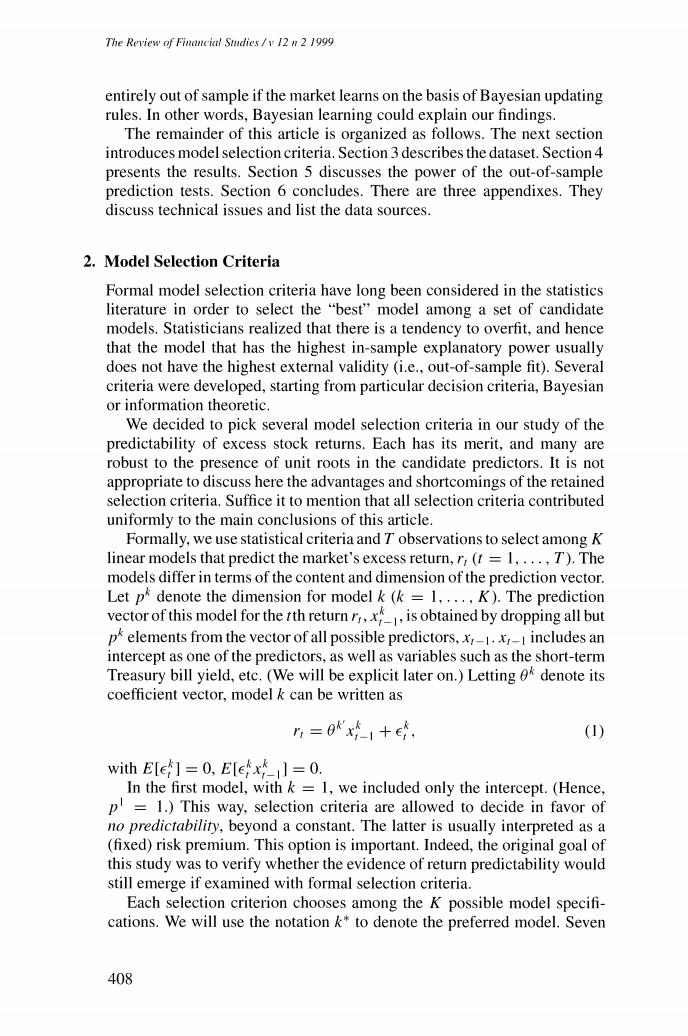正在加载图片...

The Review of Financial Smdies /v12 n 2 1999 entirely out of sample if the market learns on the basis of Bayesian updating rules.In other words,Bayesian learning could explain our findings. The remainder of this article is organized as follows.The next section introduces model selection criteria.Section 3 describes the dataset.Section 4 presents the results.Section 5 discusses the power of the out-of-sample prediction tests.Section 6 concludes.There are three appendixes.They discuss technical issues and list the data sources. 2.Model Selection Criteria Formal model selection criteria have long been considered in the statistics literature in order to select the "best"model among a set of candidate models.Statisticians realized that there is a tendency to overfit,and hence that the model that has the highest in-sample explanatory power usually does not have the highest external validity (i.e.,out-of-sample fit).Several criteria were developed,starting from particular decision criteria,Bayesian or information theoretic. We decided to pick several model selection criteria in our study of the predictability of excess stock returns.Each has its merit,and many are robust to the presence of unit roots in the candidate predictors.It is not appropriate to discuss here the advantages and shortcomings of the retained selection criteria.Suffice it to mention that all selection criteria contributed uniformly to the main conclusions of this article. Formally,we use statistical criteria and T observations to select among K linear models that predict the market's excess return,r(t =1,...,T).The models differ in terms of the content and dimension of the prediction vector. Let p*denote the dimension for model k (k =1....,K).The prediction vector of this model for the rth returnr is obtained by dropping all but p elements from the vector of all possible predictors,x,-1.x-I includes an intercept as one of the predictors,as well as variables such as the short-term Treasury bill yield,etc.(We will be explicit later on.)Letting o*denote its coefficient vector,model k can be written as n=0x1+e, (1) with E[ef ]=0,Elef]=0. In the first model,with k =1,we included only the intercept.(Hence, p=1.)This way,selection criteria are allowed to decide in favor of no predictabiliry,beyond a constant.The latter is usually interpreted as a (fixed)risk premium.This option is important.Indeed,the original goal of this study was to verify whether the evidence of return predictability would still emerge if examined with formal selection criteria. Each selection criterion chooses among the K possible model specifi- cations.We will use the notation k*to denote the preferred model.Seven 408